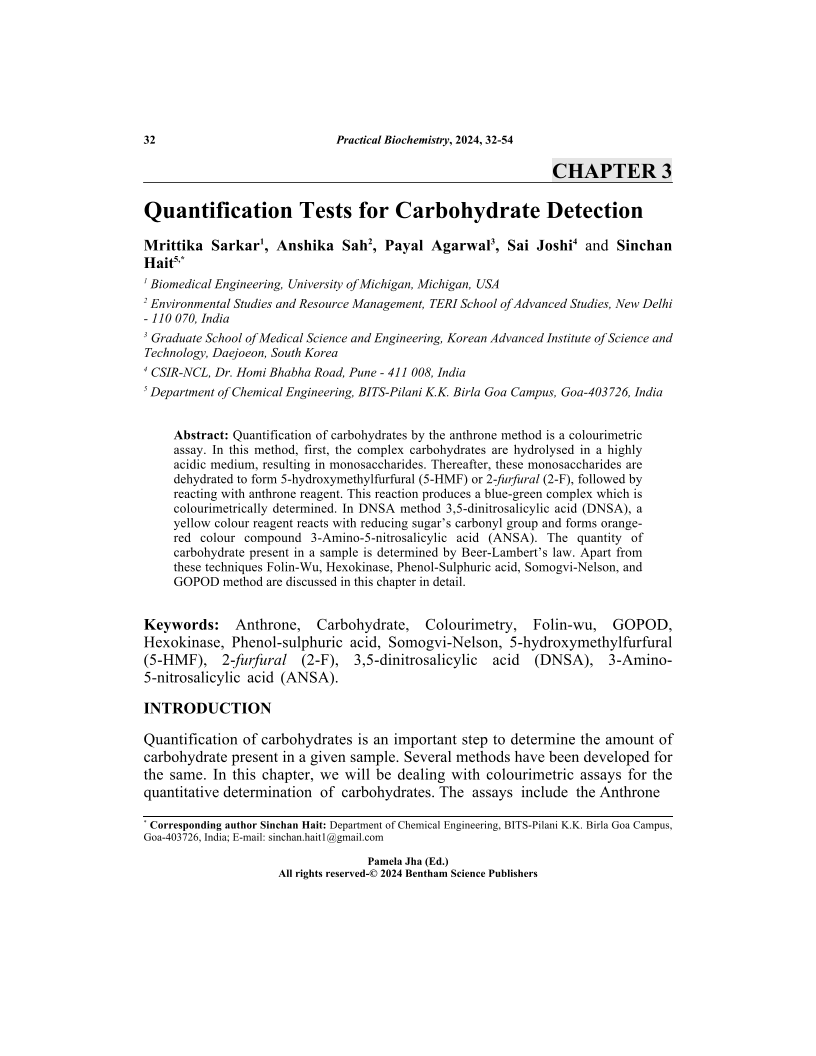Quantification Tests for Carbohydrate Detection

- Authors: Mrittika Sarkar1, Anshika Sah2, Payal Agarwal3, Sai Joshi4, Sinchan Hait5
-
View Affiliations Hide Affiliations1 Biomedical Engineering, University of Michigan, Michigan, USA 2 Environmental Studies and Resource Management, TERI School of Advanced Studies, New Delhi 110 070, India 3 Graduate School of Medical Science and Engineering, Korean Advanced Institute of Science and Technology, Daejoeon, South Korea 4 CSIR-NCL, Dr. Homi Bhabha Road, Pune - 411 008, India 5 Department of Chemical Engineering, BITS-Pilani K.K. Birla Goa Campus, Goa-403726, India
- Source: Practical Biochemistry , pp 32-54
- Publication Date: August 2024
- Language: English
Quantification Tests for Carbohydrate Detection, Page 1 of 1
< Previous page | Next page > /docserver/preview/fulltext/9789815165852/chapter-3-1.gif
Quantification of carbohydrates by the anthrone method is a colourimetric assay. In this method, first, the complex carbohydrates are hydrolysed in a highly acidic medium, resulting in monosaccharides. Thereafter, these monosaccharides are dehydrated to form 5-hydroxymethylfurfural (5-HMF) or 2-furfural (2-F), followed by reacting with anthrone reagent. This reaction produces a blue-green complex which is colourimetrically determined. In DNSA method 3,5-dinitrosalicylic acid (DNSA), a yellow colour reagent reacts with reducing sugar's carbonyl group and forms orangered colour compound 3-Amino-5-nitrosalicylic acid (ANSA). The quantity of carbohydrate present in a sample is determined by Beer-Lambert's law. Apart from these techniques Folin-Wu, Hexokinase, Phenol-Sulphuric acid, Somogvi-Nelson, and GOPOD method are discussed in this chapter in detail.
-
From This Site
/content/books/9789815165852.chapter-3dcterms_subject,pub_keyword-contentType:Journal -contentType:Figure -contentType:Table -contentType:SupplementaryData105

